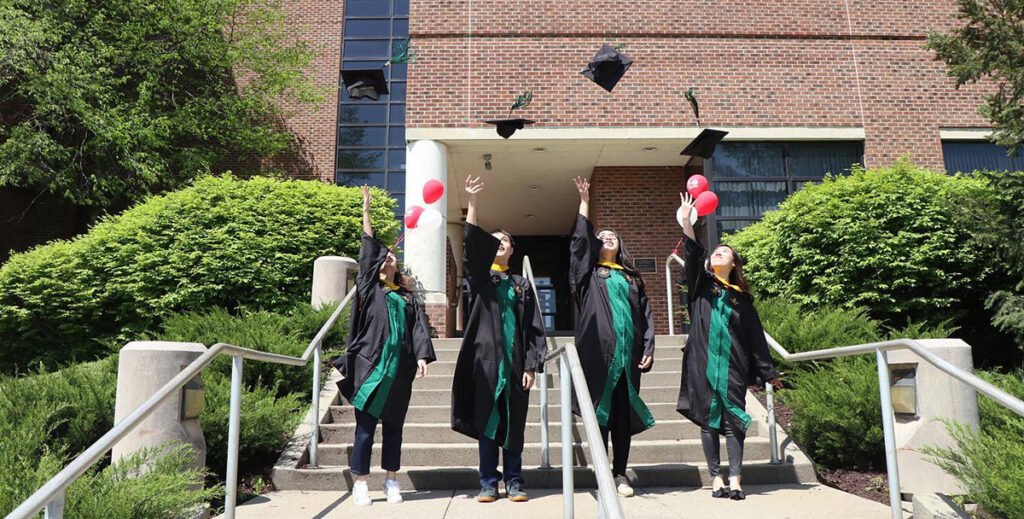Fellowships for International Graduate Students
As an ornithologist in Brazil, Cindy Barreto explains that she meticulously looked for Ph.D. programs at U.S. universities where she could focus on avian conservation while also securing a fellowship to cover her studies.

“In Brazil, federal universities often offer tuition-free education, but I knew that in the U.S., a Ph.D. is a paid opportunity,” she says.
In 2020, she received the Harriott Fellowship from the University of Connecticut. Fellowships are a form of financial aid for graduate students pursuing master’s or doctoral degrees, usually in specialized fields, and unlike loans, they don’t require repayment.
READ: What a Fellowship Is and Why You Might Want One.
The fellowship Barreto won is granted to “outstanding young scholars,” as the university describes them, who are accepted into doctoral programs. It offers a $20,000 yearly stipend for up to five years with no work obligation—though recipients must show progress in their degree.
“For me, this fellowship represents recognition for my past efforts and ongoing work in promoting diversity and inclusion in higher education,” says Barreto, who’s now pursuing a Ph.D. in ecology and evolutionary biology.
Here’s what international grad students should know about U.S. fellowships:
- Apply early.
- Fellowships are almost always merit-based.
- Fewer fellowships are available for international students.
- Fellowships aren’t widely advertised.
- Be ready for rejections.
Apply Early
Experts advise starting the funding search early, especially when applying to multiple schools.
“Each university’s application system varies, and you’ll need to devote serious time to each one,” says Stuart Paul Duncan, who oversees fellowships at UConn’s graduate school.
Starting early helps students handle delays and avoid last-minute rushes. Timing can also be crucial.
“Fellowships are awarded early in the review cycle. If your application isn’t reviewed in the first round, chances of funding drop,” says Melanie Morgan, Purdue University’s associate dean.
Fellowships Are Almost Always Merit-Based
Most fellowships reward achievement or potential, not financial need.
“These are merit-based awards, not tied to teaching or research duties,” says Tripti Asrani Singh, a counselor with The Red Pen, an education consultancy in Mumbai. Many of her students apply to multiple U.S. grad schools.
Some fellowships come from universities, others from external organizations. Examples include Cornell’s Africa Fund for Ph.D. applicants from African nations and the Graduate Women In Science National Fellowship Program, open to women of all nationalities in STEM fields.
UConn offers three merit-based fellowships: Harriott and Jorgensen for doctoral candidates, and Crandall for master’s students. Applicants are nominated by departments before a university-wide review.
At Purdue, recruitment fellowships—aimed at top students—are open to all, including international applicants, and are merit-based. Similarly, UNC-Chapel Hill’s recruitment fellowships are merit-based, with nominations from faculty across 80 programs.
International students at UNC can also qualify for interdisciplinary fellowships like the Royster Society of Fellows and Weiss Urban Livability Fellowship, which cover tuition, fees, stipends, and health insurance.
Fewer Fellowships for International Students
While options are limited, EducationUSA centers (supported by the U.S. State Department) provide updated fellowship lists.
“External funding for international students is scarce. Fulbright and government awards are the main sources,” says Morgan. Many require enrollment first.
The Fulbright Foreign Student Program supports about 4,000 international grad students, professionals, and artists yearly.
Still, departments often help strong applicants secure funding, like research or teaching assistant roles.
Thomas Pilnik, a dual British-Brazilian citizen, applied only to fully funded MFA programs. At UConn, the art department nominated him for the Crandall Fellowship, boosting his stipend.
“The fellowship made my MFA financially viable. That freedom is priceless,” he says.
Fellowships Aren’t Well-Advertised
Finding fellowships may require extra effort since they’re rarely promoted heavily.
UIUC’s fellowship finder and IIE’s funding database are helpful tools. Experts also suggest contacting international student offices, department secretaries, and checking school websites.
Singh recommends joining university mailing lists and asking admissions teams for funding details post-acceptance. Virtual events are also good for targeted questions.
Prepare for Rejections
Fellowships can be competitive, and rejections are possible.
“Admission depends on fit—between the applicant, program, and sometimes a specific professor,” says Morgan. Many programs won’t admit students they can’t fund.
She advises emailing faculty early to build connections.
“Competition for spots and funding is fierce. If you don’t succeed this time, you can always reapply,” Duncan adds.
Barreto applied only to UConn, knowing the ecology department guaranteed assistantships. She was ready to reapply if needed—but won the fellowship.
“It made my dream of a Ph.D. abroad possible,” she says.

